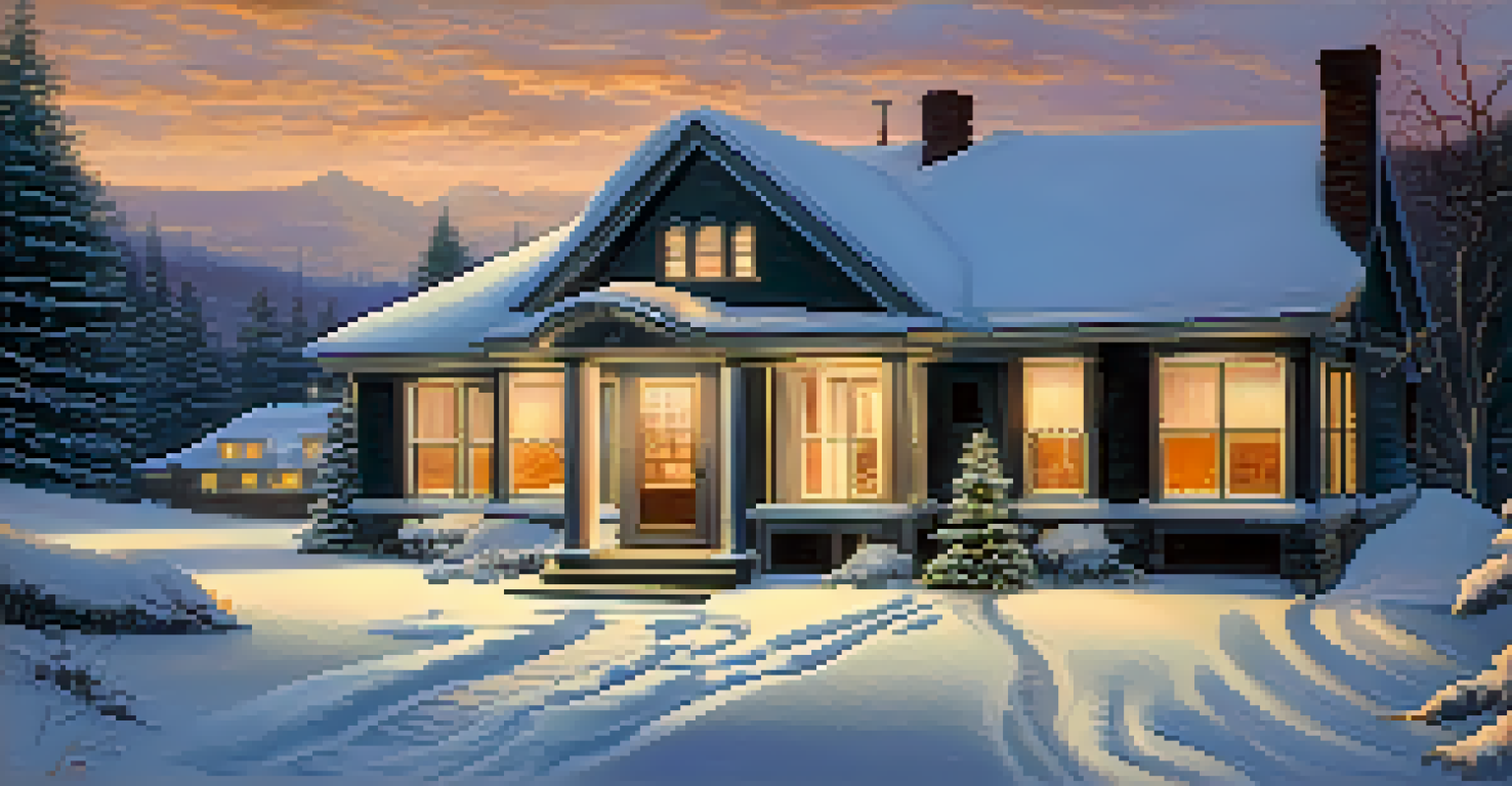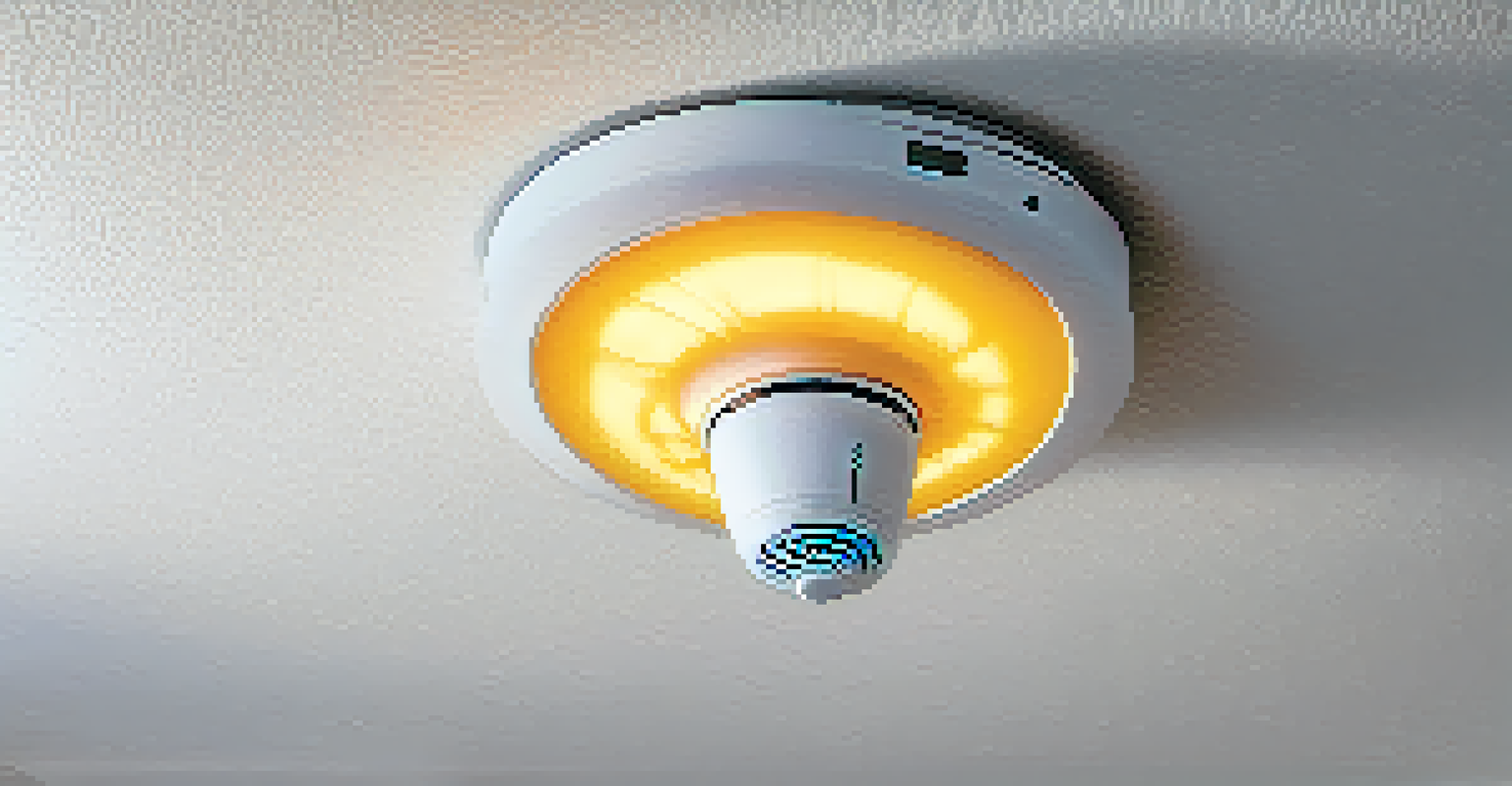Home Safety Upgrades for Winter Months

Inspect and Upgrade Your Heating System for Safety
As winter approaches, ensuring your heating system is in optimal condition is crucial. Regular inspections can help identify any issues, such as leaks or faulty components that could pose safety risks. Consider scheduling a professional check-up to ensure everything is functioning properly and efficiently.
An ounce of prevention is worth a pound of cure.
Additionally, installing a programmable thermostat can help you maintain consistent temperatures, which not only enhances comfort but also prevents overheating issues. By setting specific times for your heating to kick in, you can save energy and reduce the risk of fire hazards caused by malfunctioning heaters.
Finally, don’t forget to replace your furnace filter regularly. A clean filter improves airflow, reduces stress on your system, and prevents potential breakdowns on those cold winter nights when you need heat the most.
Seal Windows and Doors to Prevent Drafts
Drafty windows and doors can significantly decrease your home's energy efficiency during winter. Sealing these gaps not only keeps your home warm but also protects against ice and moisture buildup, which can lead to serious damage over time. Simple weatherstripping can do wonders to block out the chill.

Consider using caulk for stationary areas that might have larger gaps, like around window frames. By sealing these openings, you'll not only stay cozy but also lower your heating bills. This dual benefit makes sealing a win-win situation for any homeowner.
Inspect Your Heating System Regularly
Regular inspections of your heating system can identify safety risks and improve efficiency.
Moreover, adding window films or heavy curtains can provide an extra layer of insulation while also offering a cozy aesthetic to your living space. This small upgrade can make your home feel more inviting as winter settles in.
Install Smoke and Carbon Monoxide Detectors
Winter often means increased use of heating appliances, which raises the importance of smoke and carbon monoxide detectors in your home. These devices are essential for ensuring the safety of your family by alerting you to dangerous conditions before they become life-threatening. Check that your detectors are functioning properly and replace batteries if necessary.
The best way to predict the future is to create it.
For added safety, consider investing in smart detectors that can send alerts to your phone. These high-tech options can provide peace of mind, especially if you’re away from home but want to keep an eye on your family’s safety.
Regularly test your detectors to ensure they are working efficiently. A simple monthly test can save lives and provide assurance that your home is equipped to handle any potential emergencies.
Clear Gutters and Downspouts to Prevent Ice Dams
Clogged gutters can lead to ice dams forming on your roof, which can cause significant damage if not addressed. Regularly cleaning your gutters and downspouts helps ensure proper water flow and prevents snowmelt from freezing and causing blockages. This simple maintenance task can save you from costly repairs down the line.
Consider installing gutter guards to minimize debris accumulation in the first place. These protective covers can help keep your gutters clear and functioning, reducing the need for frequent cleanings and providing peace of mind.
Seal Drafts for Better Energy Efficiency
Sealing gaps in windows and doors prevents drafts, keeping your home warm and reducing heating bills.
Additionally, check for any loose or damaged shingles on your roof that might exacerbate ice dam issues. Taking a proactive approach to your roof's condition will help your home withstand winter's harsh elements.
Protect Pipes from Freezing and Bursting
Frozen pipes can lead to disastrous leaks and water damage, so it's crucial to take preventative measures before the deep freeze sets in. Insulating exposed pipes in unheated areas, such as basements or attics, can help maintain a steady temperature and prevent freezing. Foam pipe insulation is an effective and easy-to-install solution for this issue.
Additionally, during particularly cold spells, let faucets drip slowly to keep water moving through the pipes. This simple trick can help prevent ice formation, reducing the risk of bursting pipes when temperatures drop drastically.
Don't forget to know where your main water shut-off valve is located. In case of an emergency, quick access can minimize damage and save you a lot of headaches.
Ensure Your Home Is Well-Lit for Safety
With shorter days and longer nights, proper outdoor lighting becomes essential for safety during winter. Well-lit pathways and entryways not only provide guidance but also deter potential intruders. Motion-sensor lights are an excellent investment, as they automatically illuminate when someone approaches, adding both convenience and security.
Inside your home, ensure that hallways and staircases are adequately lit to prevent slips and falls. Consider using brighter bulbs or adding additional light sources to these areas to enhance visibility during the darker months.
Prepare for Winter Emergencies
Having an emergency preparedness plan and an updated home insurance policy are crucial for winter safety.
Lastly, don’t overlook the importance of having working flashlights and extra batteries on hand. Power outages can happen during winter storms, and being prepared ensures you won't be left in the dark.
Develop an Emergency Preparedness Plan
Winter storms can sometimes lead to unexpected emergencies, so having a preparedness plan is vital. This plan should include an emergency kit stocked with essentials like food, water, medications, and warm clothing. Make sure everyone in your household knows where the kit is kept and how to access it in case of an emergency.
Additionally, discuss and practice your plan with family members. Knowing what to do in various scenarios, such as a power outage or getting snowed in, can provide peace of mind and help everyone feel more secure.

Lastly, keep a list of important phone numbers, including local emergency services and family contacts, easily accessible. In a stressful situation, having these numbers handy can make all the difference.
Regularly Review and Update Your Home Insurance Policy
As you make various upgrades and improvements for winter safety, it's an excellent time to review your home insurance policy. Ensure that your coverage reflects the current state of your home and any changes that might affect it, such as new heating systems or renovations. Keeping your policy up to date can save you from unexpected expenses in case of damage.
Consider discussing your policy with an insurance agent to understand what is covered and what isn’t, especially regarding winter-related damages like burst pipes or ice dams. This knowledge will empower you to make informed decisions about additional coverage if needed.
Finally, don’t forget to check for any discounts you might qualify for due to safety upgrades. Many insurance companies offer reduced premiums for homes equipped with security systems or modern heating solutions, making it worth your while to inquire.